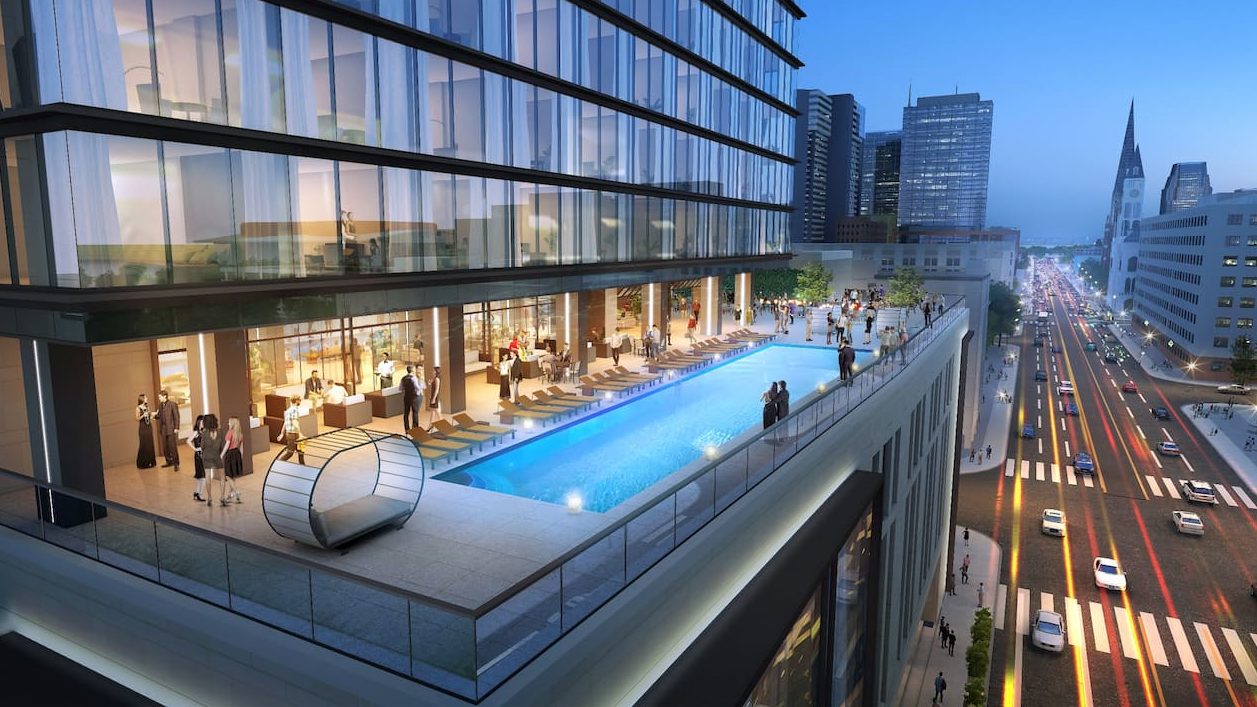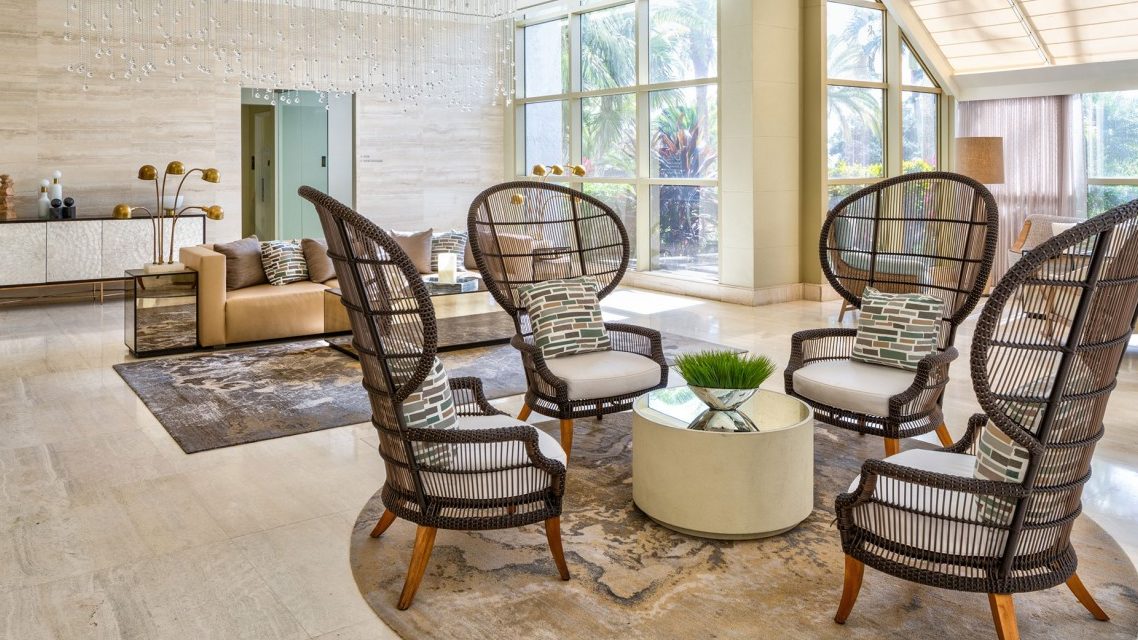How to design intimate gatherings that get business done
Small meetings may just be the new black for pandemic season. When distancing requirements across the country result in capacities of 25 percent to 66 percent fewer people, setting the stage for the most productive experience possible for those in the room requires all the creativity of a couture designer.
From creating a sense of intimacy and adding personalized touches through elevated prepacked F&B to reminding attendees not to get so comfortable that they neglect their responsibility to maintain safety precautions, experts are hitting the runway with fresh approaches to seating arrangements, meals and agendas.
Smart Meetings jumped on a plane to experience one of these custom-fitted productions ourselves at an Associated Luxury Hotels International (ALHI) Executive Women in Leadership showcase event at Naples Grande Beach Resort in Florida. We are happy to report that as much as we would have loved reuniting with big hugs, safe distances were maintained and branded masks were donned.
Read more: My Return to Meetings Story
Following are some of the takeaways from that gathering, along with tips from IACC’s Critical Pathway to Reopening Meeting, Conference and Training Space, a guide for redesigning the meeting attendee experience when face-to-face events resume.
As an industry, we are deconstructing the pattern for meeting so we can put it back together again, more impactful and streamlined than ever before.
Grand Entrances

The meeting journey starts at the front door. Airlines have stepped up safety protocols with increased cleaning, mask requirements, wipes handed out during boarding and prepackaged refreshment offerings. “We are flipping Maslow’s Hierarchy of Needs on its head and attending to the psychological need to feel safe first,” said Norma Dean, director of specialty sales with Delta Air Lines. The company has hired sanitation officers, is retooling restrooms with self-cleaning treatments as part of a partnership with Lysol, and is making cleanliness protocols a safety priority just as important as operation of the aircraft.
Many airlines, down 80 percent in occupancy at one point, are extending travel flexibility (through 2022, in some cases) to give travelers peace of mind that they can cancel or reschedule if something happens. “We are calling it people over profits,” Dean said. That philosophy is resulting in a focus on keeping employees safe by providing their families with home COVID-19 testing kits and transporting medical workers for free or shipping essential supplies around the world. “We will blacklist million-mile members and turn the plane around if someone refuses to wear a mask,” Dean said. “This is serious.”
For those exclusive executive retreats where risk needs to be minimized as much as possible, many are turning to private jets, something Delta Private Jets offers in partnership with the membership aviation solution company Wheels Up. The arrangement “democratizes” private aviation, making it more accessible just when more companies are looking for commercial flight alternatives.
Still, many of the first in-person meetings to return will be both small and regional. People, and the companies approving their travel, may feel more comfortable at first driving because they can control more of the variables. AICC suggests that meeting professionals approach the parking lot of the venue as the first chance to start providing information. Signage reminding attendees about protocols and steps being taken can set the tone for a productive—and safe—session. It is also a great spot for a handwashing sanitation station.
For those hyper-local gatherings, Etc. venues in London and Manchester in the United Kingdom and New York City in the United States are installing new bike parking.
Contactless Touches

What was once considered a luxury is now a requirement at many meetings. Contactless check-in, paperless registration and app-driven information exchange are front and center. Planners who have struggled with their IT teams for years to get approval are suddenly seeing a green light to go paperless in a matter of weeks.
Austin, Texas-based Boundless is packaging branded face masks, disinfectant—and moisturizing masks to offset all those chemicals—into thoughtful packages, along with personalized, refillable water bottles.
Check out Boundless products and more in our September Smart Style.
The lobby and registration area is another opportunity for clear, prominent signage to direct traffic and eliminate bottlenecks. IACC suggests taking a soft or whimsical approach to informational markers. At ClubMed, a popular destination for executive and incentive retreats, the company’s Safe Together program, approved by an international scientific committee of doctors, is visible in signage and operational changes from the moment guests arrive.
Meeting Room Makeovers

Even small group meetings and board meetings will require reminding attendees to maintain safe distancing and the importance of following safety requirements. That tone can be set from the stage. Start the meeting with a presentation similar to what we expect on a commercial airplane before takeoff. When the instructions for greeting with a bow and wearing a mask become as ubiquitous as directions for fastening seatbelts, they will transform from alarming to reassuring.
We have all seen pictures of a grid of straight-back chairs spaced out in a room like bumpers in a pinball machine, but this is not the only option. ALHI, with an assist from Global Works Events & DMC, brought in an assortment of comfortable soft seating, padded bucket chairs and side tables that were assigned with name tags for the duration of the conference, just as you would at a fancy dinner. Rugs and plants added more warmth to the room.
Critical Pathways suggests swivel chairs, so people can watch a presentation with standard distancing and then quickly turn for a breakout discussion or a fishbowl configuration with a panel in the middle. A theater-in-the-round central stage dramatically reduces the distance between presenters and participants while maintaining safety—there is no back of the room.
Even large groups can be broken down into smaller groups in different rooms which are more manageable with new density limitations, the Critical Pathways report suggests. Streaming content between rooms can bridge the gap between in-person and distanced.
All-inclusive properties, such as Haven Riviera Cancun, which is reopening Oct. 1 with more flexible booking policies, can make it easy for guests to find their own space. And a new 24,500-square-foot convention center opening in late 2021 will make it easy to stream hybrid meetings from the property.
New Ballroom Etiquette
Requiring guests to sign a code of conduct is all the rage and can help keep safety top of mind. All must do their part. Masks are to be worn when entering the public space but can be removed during meals or when attendees are at their distanced spaces.
When the session ends, remind everyone to take all personal items, writing materials, papers and cups with them instead of leaving for the cleaning team.
Bathroom and elevator monitors can help limit room capacity with an assist from signage. Automatic or propped-open doors during entry and exit can limit contact with high-touch areas.
RSVP for Your Return to Meetings

The Smart Meetings team has been buying acrylic panels by the pallet and getting ready to put to work all the lessons we’ve learned about protocols over the last seven months. Best practices will be on display Oct. 11-13 at Hotel del Coronado in San Diego, California, and Nov. 8-10 at Grand Hyatt Nashville, followed by The Smart Woman Summit in the newly opened property’s ballroom on Nov. 11. These boutique experiences will showcase upscale, contactless F&B, safe one-on-one meetings and an intimacy borne of sharing ideas, rather than close quarters. Register today to see for yourself how to get your group back in the meeting.
Food for Thought

The idea of 72-inch rounds with only three people can seem sterile, but special touches make all the difference. At the ALHI event, an icebreaker phone call in advance ensured everyone knew a handful of participants.
The IACC report suggests al fresco dining where possible—and taking the group outdoors in fresh air lets everyone breathe easier. Pedestal paver systems can convert a parking lot into an attractive staging area and portable meeting pods can create isolated spaces that are easily cleaned for the next attendees.
Director of Sales Eric Domitrovits at Mohonk Mountain House in New York confirmed that demand for executive meetings of 6-12 people has been increasing. The 150-year-old property in easy driving access from New York City and New Jersey offers several self-contained lodge setups away from the main resort, with large central living rooms equipped with modern AV systems, wraparound porches and distanced picnic tables with views of the lake and mountains. Outdoor barbecues make F&B easy. “We have always been creative, but this is forcing us to think outside the conference room,” he said.

Similarly, Pepper Dombroski, director of sales at The Broadmoor in Colorado Springs, reported that “the 40-person and smaller group has become our new normal.” The 5,000-acre property offers indoor and outdoor bubbles, including a 12,000-square-foot Gatspy-esque house with croquet gardens. The planner can control contact variables yet still have access to all services of the main property.
In Florida, access to the outdoors has helped properties stay open during the sheltering in place. William McBroom, director of conference sales with St. Augustine, Ponte Vedra and the Beaches Visitors & Convention Bureau, said Florida’s Historic Coast points to activities such as kayaking and golfing at Ponte Vedra Inn & Club as natural ways to keep small groups safe.
Mark Cooper, CEO of IACC and chair-elect for Events Industry Council, was optimistic. “This is an opportunity to leverage the new circumstances and bring some highly needed fresh ideas into the conference room.”
Michael Dominguez, ALHI president and CEO, said advances being made at hyperspeed in biometrics and audiovisual—or as he prefers referring to it, “omni-channel” technology—will make it possible to bring meetings back stronger than ever. When that happens, there may be more of them than ever. All those remote workers will need to come together to exchange ideas. For the next few seasons, at least, that will most likely be done in small groups.




